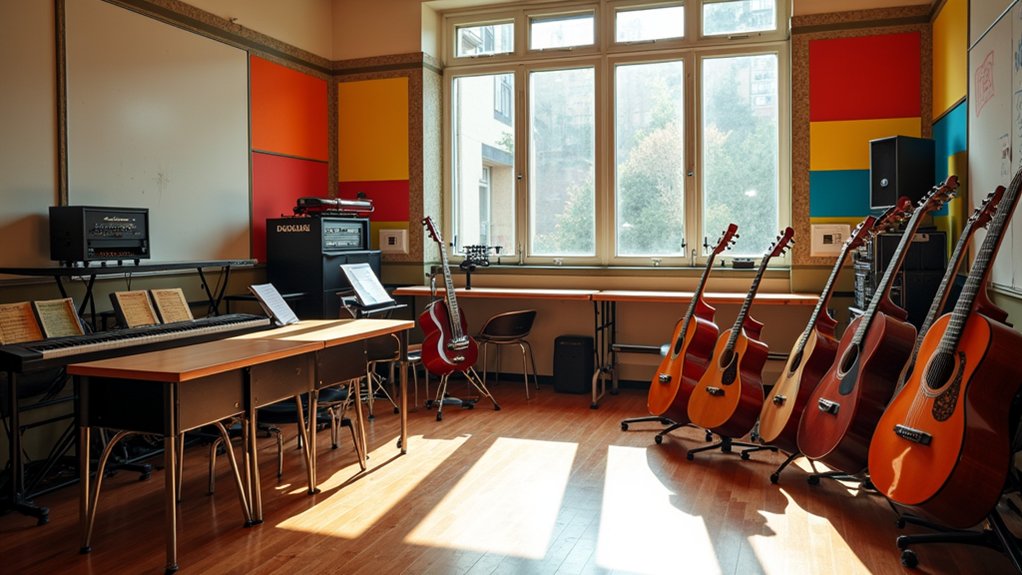Inequity in music education remains a persistent challenge across America’s educational landscape, with nearly 3.6 million public school students lacking access to any form of musical instruction. These disparities disproportionately affect urban, low-income, and mainly minority schools, where resource constraints often push music programs to the margins of educational priorities.
America’s music education crisis leaves millions of students without access, predominantly affecting those already marginalized by poverty and inequality.
The Rock & Roll Hall of Fame and Save the Music have emerged as powerful advocates working to bridge these gaps through targeted interventions in America’s most underserved school districts. Their programs specifically address the troubling reality that 42% of music teachers must rely on fundraising to maintain adequate curricula, with that number climbing to 58% in urban areas where budget cuts continually threaten program viability.
Economic hardship creates substantial barriers to musical participation, especially in communities where local property tax funding – the primary revenue source for public schools – remains insufficient. When districts face financial pressure, music programs typically face elimination first, despite research consistently showing that musical education enhances cognitive skills, academic achievement, and emotional well-being among participants. This pattern has accelerated since the economic recession began forcing significant funding cuts for public schools nationwide. Students with four years of arts and music courses score over 90 points higher on the SAT compared to peers without such educational experiences.
These organizations’ initiatives have particular significance in rural schools, which often operate without structured music programs, adequate instruments, or specialized instructors. Musicians themselves can contribute to these efforts through music teaching opportunities that provide both community support and supplemental income. Their approach acknowledges that students with disabilities, those living in poverty, and English language learners face compounded disadvantages in accessing music education, effectively deepening existing educational inequities.
The impact extends beyond mere access to instruments; both organizations emphasize thorough program development that supports long-term sustainability. Many established artists volunteer their expertise by conducting recording workshops that introduce students to professional music production techniques. Their interventions arrive at a critical moment when accountability measures like standardized testing have narrowed curriculum offerings nationwide, leading to decreased music course availability and participation.




